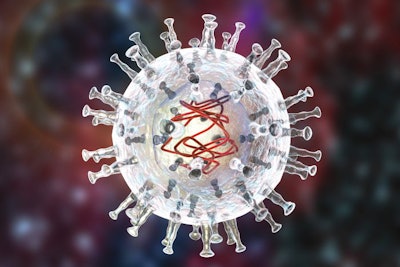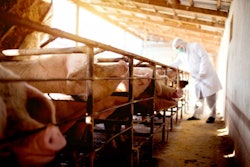
Multiple studies suggest composting can eliminate risk of African swine fever virus spreading from carcasses
Producers looking to reduce the risk of spreading African swine fever (ASF) should be able to eliminate infectious virus from contaminated carcasses by composting them, according to an emerging body of research.
According to the latest study, published last month in a special issue of the journal Pathogens, composting contaminated carcasses in Lithuania successfully inactivated the virus within 112 days, although traces of the viral genome remained present at the end of the test period. Other studies conducted in controlled environments such as the laboratories at Plum Island have also indicated that composting should be an effective means of preventing the spread of ASF, according to Gary Flory, a consultant who specializes in transboundary animal diseases and one of the authors of the Lithuanian study.
Because the main strategy for addressing an outbreak of ASF is depopulation, the safe disposal of contaminated carcasses is a important priority. Improper disposal could allow the virus to spread through the environment or through other animals, such as wild birds that might eat the carcasses and fly to another location. And yet there is relatively little data on the efficacy of various means of carcass disposal, Flory said.
That compositing would eliminate the virus from contaminated tissue is a rational assumption, Flory said. Heat has been shown to be a natural enemy of the ASF virus; temperatures in the range of 140 degrees Fahrenheit will render the virus inactive in 15-20 minutes. Recommendations from the U.S. Department of Agriculture (USDA) call for compost piles to be held at an internal temperature between 131 degrees and 170 degrees for at least three days.
The Lithuanian project represented an interesting opportunity, Flory said, because it can be difficult to achieve those temperatures in compost in cooler climates. Yet their results showed the composting process rendered the virus inert even though the temperature of the compost did not exceed 150 degrees.
That could suggest compost deactivates the virus through means other than heat alone, Flory said. It could be that a change in pH, predation by other microbes, or simply the absence of a living host destroys the virus.
Producers should still plan to follow USDA’s guidance, including the temperature guidance, on composting when disposing of depopulated carcasses, Flory said. But the Lithuanian results raise interesting questions about other potential means of combating the spread of the virus. Additional research, he said, will investigation options such as deep burial, where there is still limited data about viral survival.
















